Another day at Plaza de Santa Ana
Plaza de Santa Ana in Las Palmas de Gran Canaria is one of the heartbeats of the city’s history and life.
A group of young boys and girls skip playfully around the centre of Plaza de Santa Ana. Their youthful cries drift skywards, bringing back to present time a square that speaks volumes of the past. It is a setting dominated by sturdy, beautiful buildings which have been witnesses to the centuries-old history of Las Palmas de Gran Canaria, the Atlantic city where this emblematic site sits. A place not to be missed.
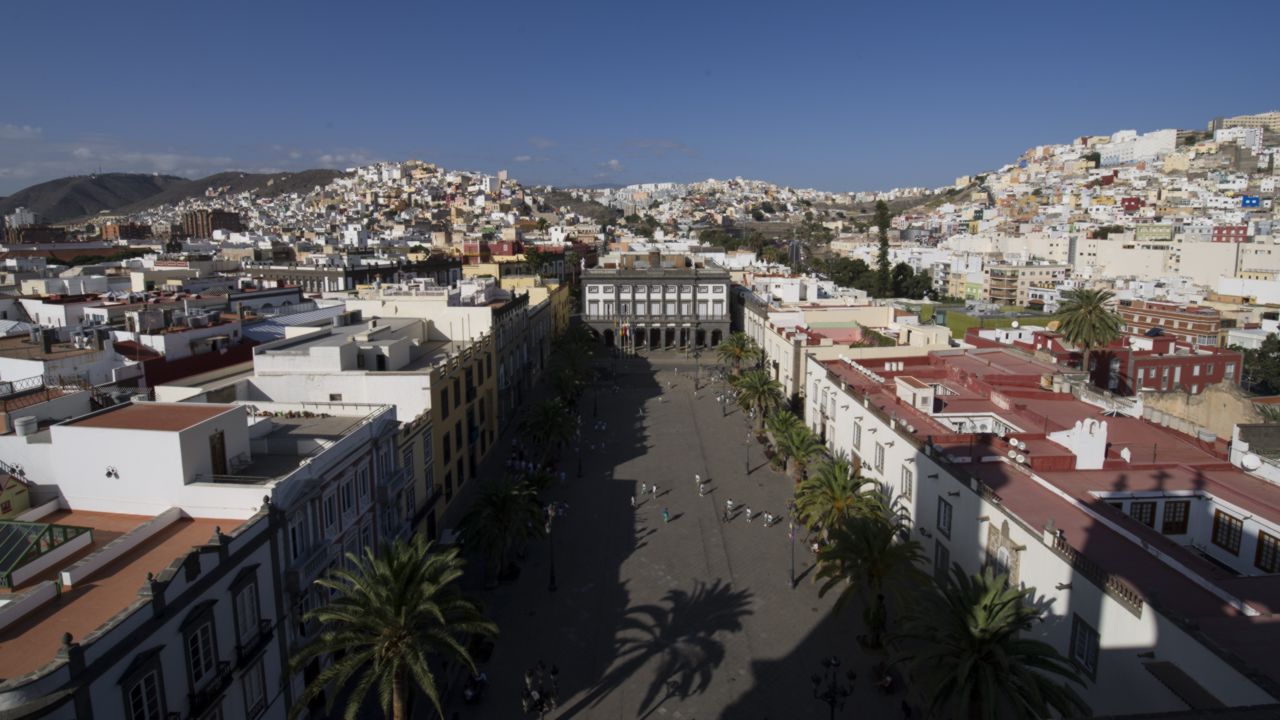
Plaza de Santa Ana is both a model and a antecedent of urban layouts that would be implanted later down the line in large numbers of cities around Latin America, and a spot where we come face to face with a wholly mystical power, in this case represented by Santa Ana Cathedral, the Canaries‘ most important religious building, and earthly one too, alongside the Casas Consistoriales council buildings inaugurated in 1856.
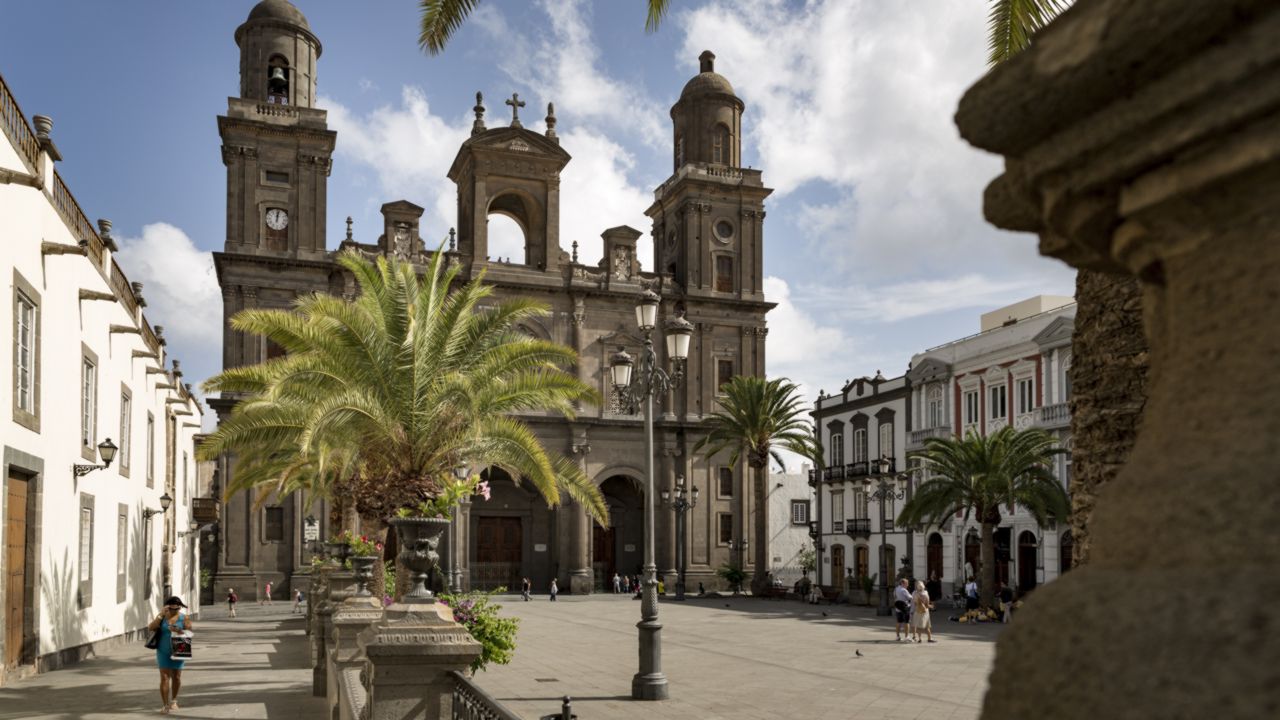
The bustle of playing kids and other people moving back and forth across the square offer a stark contrast to the stillness of eight cast iron figures painted in green bronze. These are the Dogs of Plaza de Santa Ana. They have resided here since the end of the 19th century, and have become one of the symbols of the city, and guardians of both this square and its Cathedral. They don’t bark or run around, but they seem to be observing us.
Let’s take a stroll around, literally speaking, because we are walking around a rectangle. If we start at Plaza de Santa Ana from the northern flank and the Cathedral’s façade, we firstly come to the headquarters of the Bishopric of the Canaries and the Diocesan Bookshop, which takes up virtually the whole of this side of the square, before we come to the stairway leading up to the Casas Consistoriales.
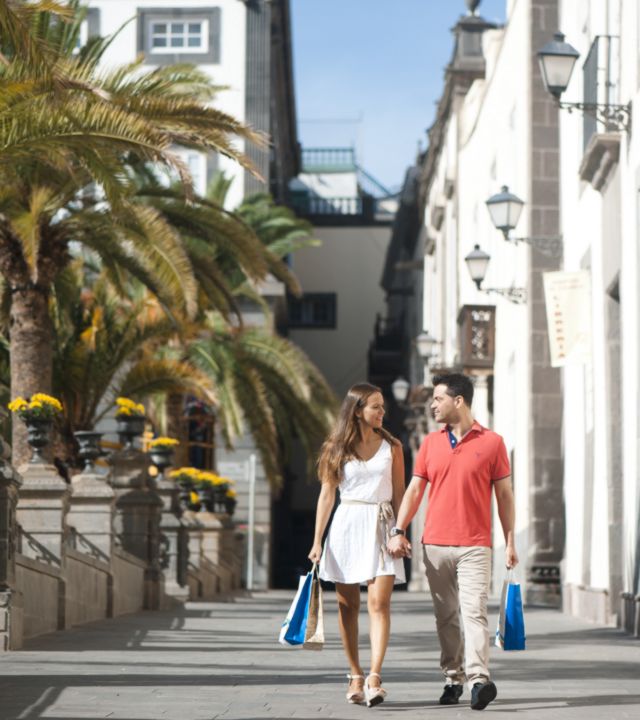
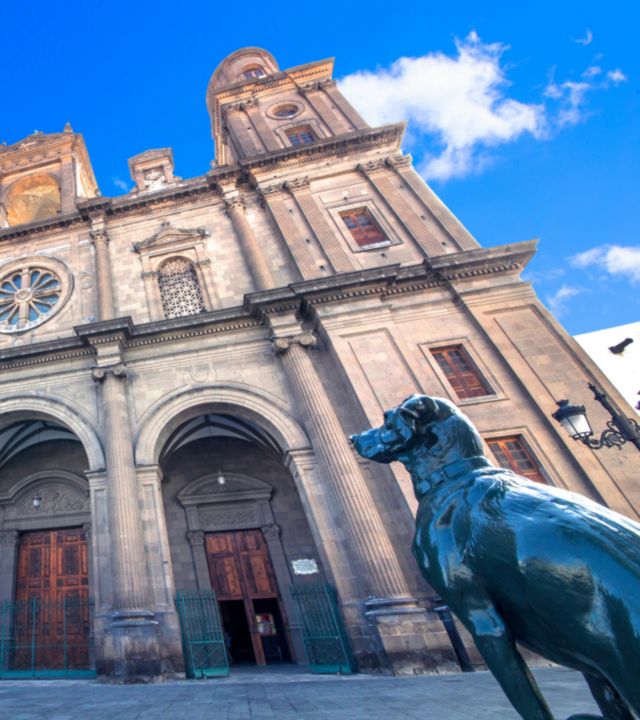
This building used to be home for the Town Hall until 1977, when it moved to calle León y Castillo. Now it is the site for the Tourist Information Office (OIT in Spanish) and an important artistic representation of the Canaries and other places, both in terms of pictures and sculptures, including works given to the Town Hall of Las Palmas de Gran Canaria by the Prado Museum in Madrid.
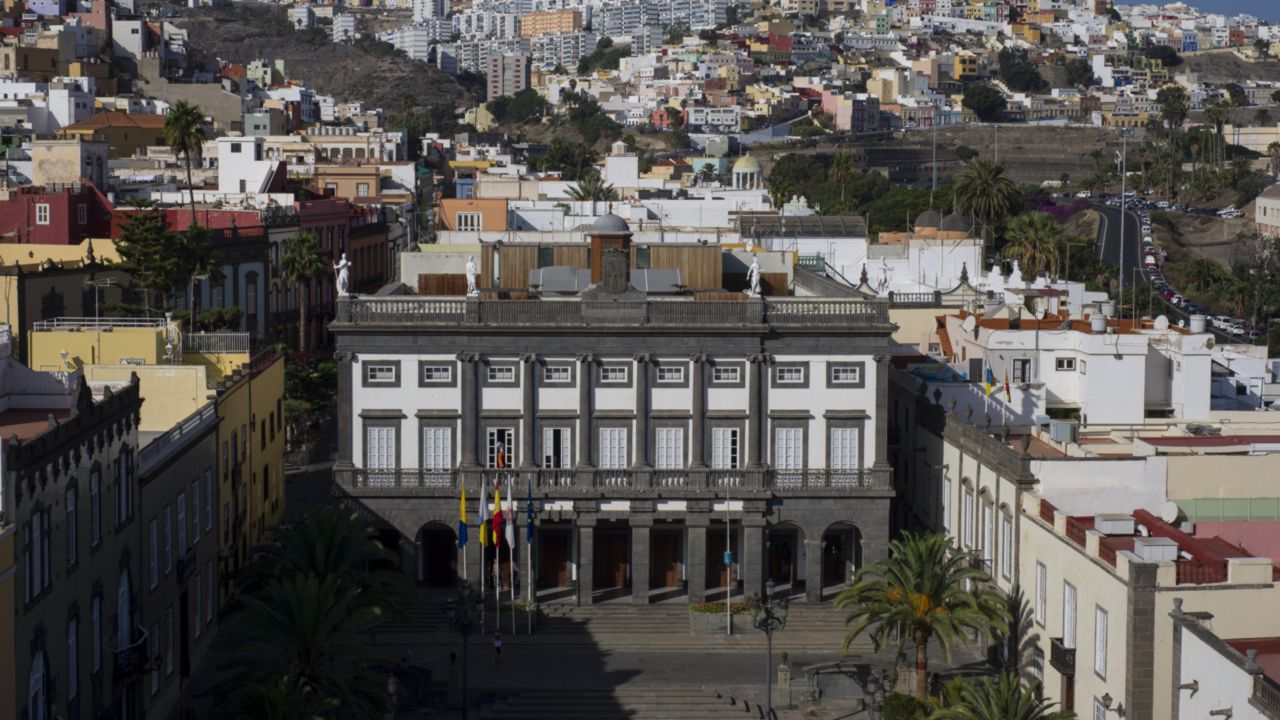
We make our way back down to the Catdedral, now facing southwards, where we come to the Provincial Historical Archive, on whose façade we can read a plaque dedicated to the Canaries‘ first great historian, José Viera y Clavijo, who lived in this house and died there in 1813. This distinguished researcher, biologist, writer and main exponent of the Enlightenment period in the islands, travelled to France and the Netherlands in order to widen his knowledge on botany and chemistry.
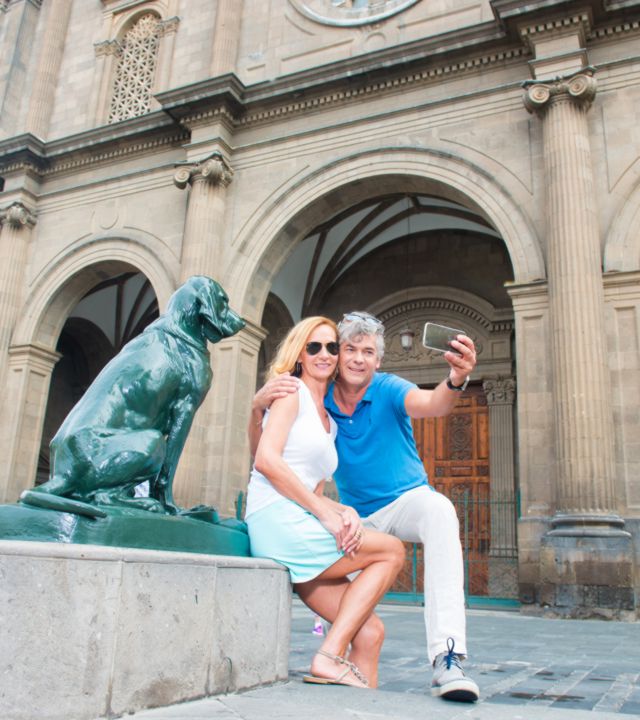
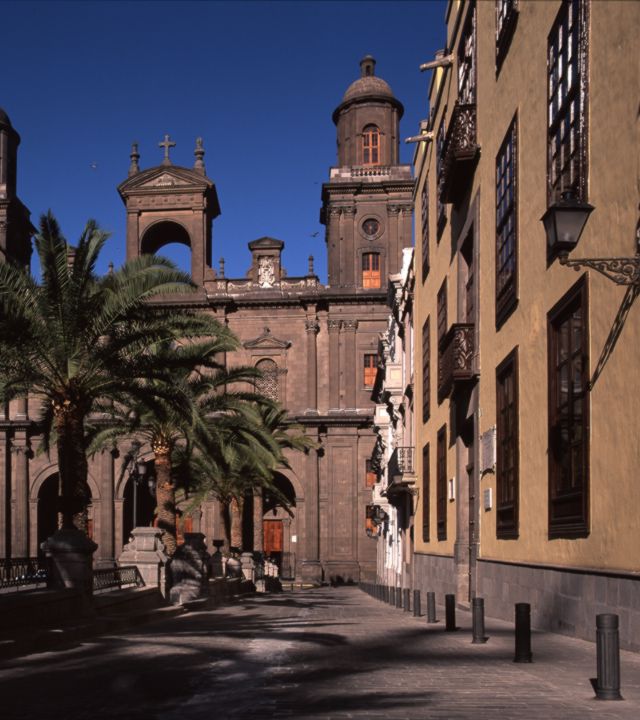
Further down, and once we are past the Farmaceutical College of the Province of Las Palmas, there is another dedication, this time to the memory of the ill-fated pirate attack the city suffered in 1599, considered the most notable war event in the history of the Canary Islands, as referred to in the text. Many of the stone downpipes and gutterings of the stately houses in the neighbourhood of Vegueta, where Plaza de Santa Ana is sited, simulate the shape of canons, a sign of the fear locals held for pirates, as well as their inventiveness of design.
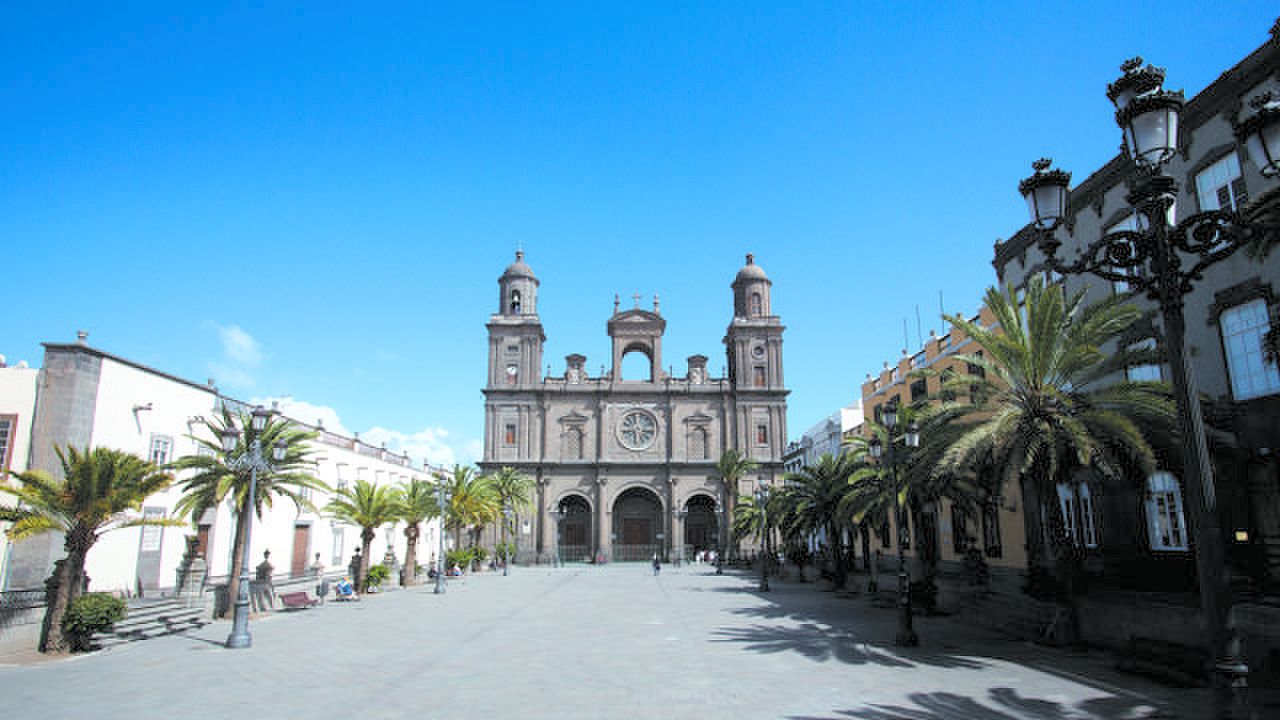
The local surroundings also feature a couple of bright and breezy terrace bars, where visitors can sit down for anything ranging a glass of wine to an infusion, or a tapa, right where the stone insignias feature the memory and the mark left by both pirates and scientists. The children, meanwhile, carry on playing happily. It is just another day, many centuries on, in Las Palmas de Gran Canaria.

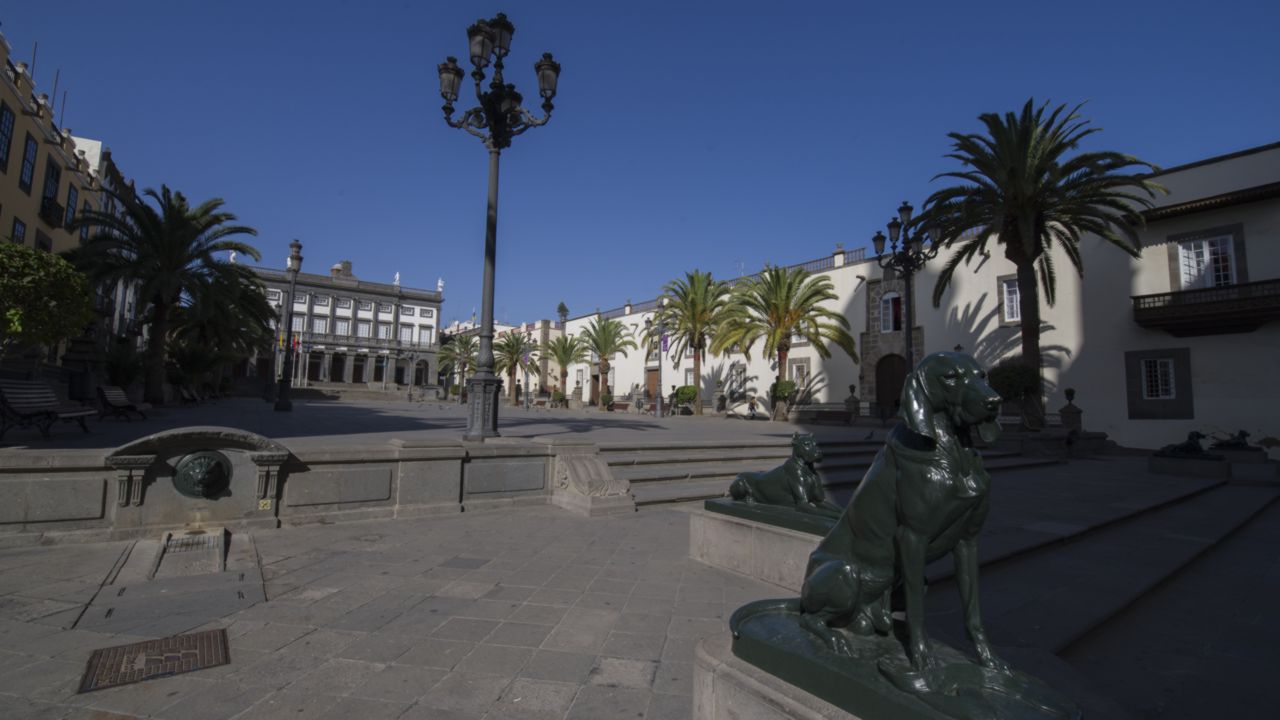
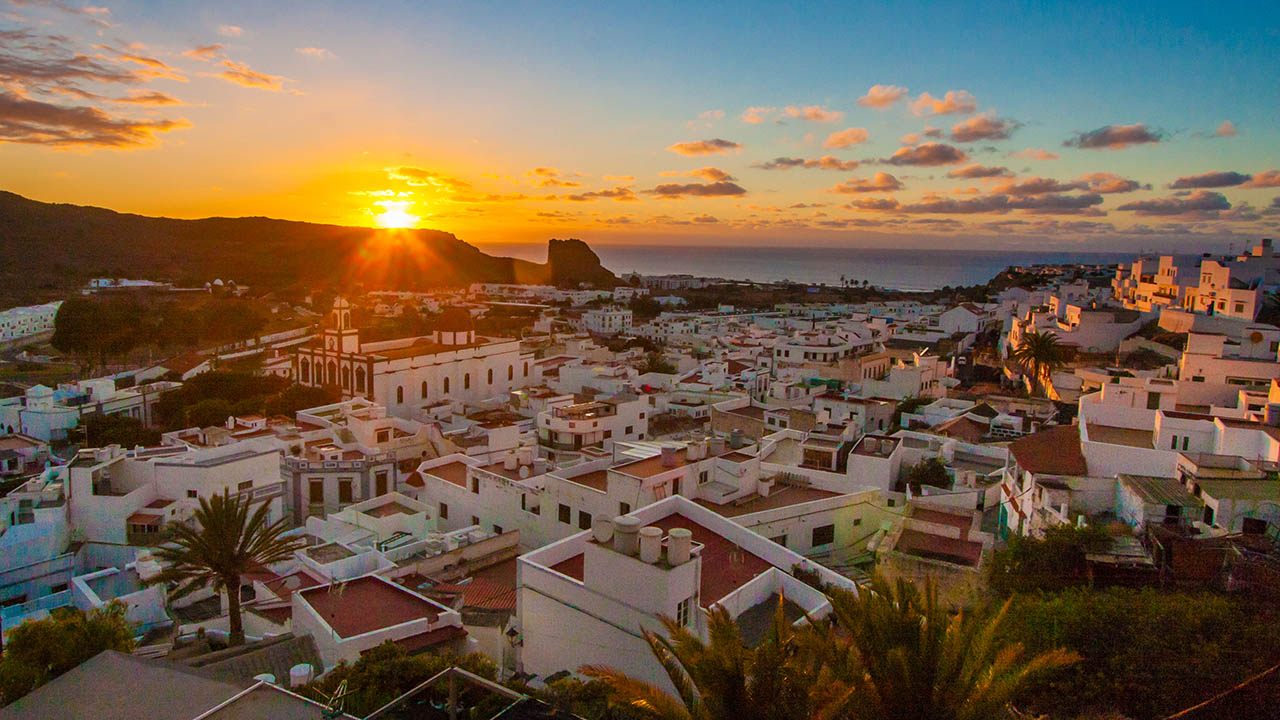
Comments are disabled for this post.